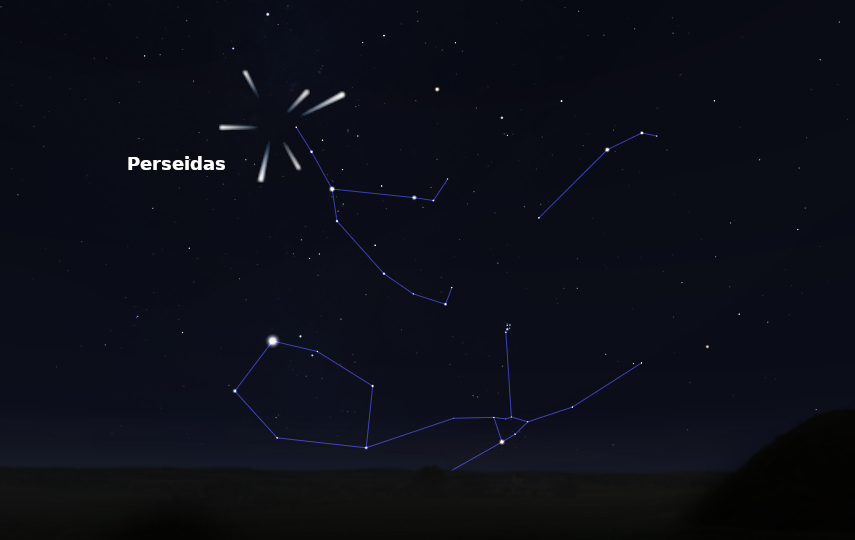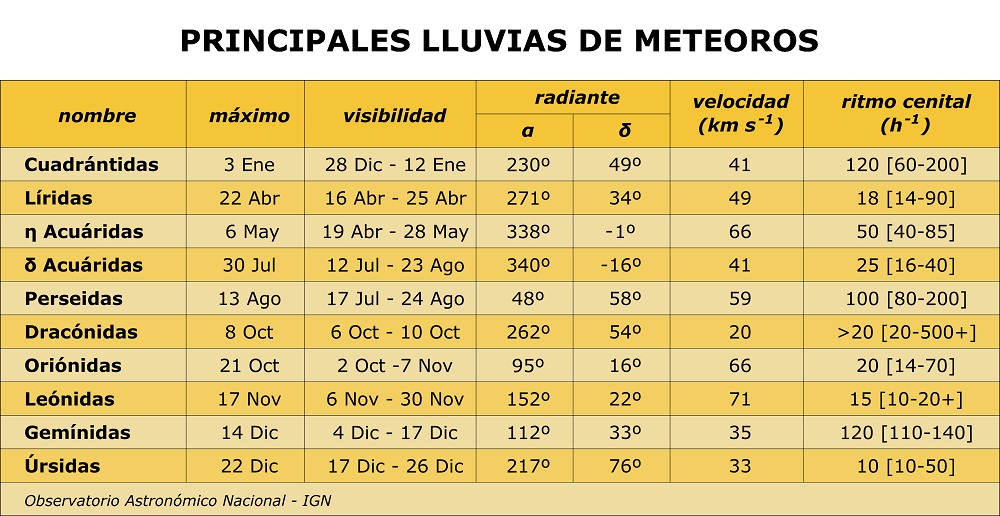Meteor showers
A meteor is the penetration of a particle of matter (meteoroid) into the atmosphere at high speed. The vaporization of the particle by its collision with air molecules produces a luminosity that makes this phenomenon observable. Its duration is usually a fraction of a second. The height at which the meteor becomes visible is of the order of 100 kilometers, although it depends slightly on the speed of penetration; the particles that impact at higher speeds typically evaporate higher in the atmosphere. The particles of size between a tenth of a millimeter and some centimeters are totally consumed above 50 kilometers, even though the great brightness and transverse speed of some of them can convey the impression that they are close to the observer. Only a few meteoroids, with a sufficiently large initial mass (>1 kg) and a very solid consistency (rocky, metallic), reach the ground every day, and in that case they are known as meteorites.

At certain times of the year there is a higher rate than average for meteorite appearance from a given region of the sky (radiant), indicating a common origin. Meteor showers are associated with the leftovers of comets that cross the Earth's orbit in their successive passages near the Sun.
The most important meteor showers observed throughout the year are listed in the following table:

The meaning of the columns is as follows:
- The maximum indicates the approximate date when the maximum rate of meteor showers is expected.It can vary by a few days from year to year.
- Visibility is the period of time when the meteor shower is usually observed at a rate significantly higher than the usual average rate.
- The radiant is the direction from which the meteor shower appears to arise at the instant of maximum. (α is right ascension and δ is declination).
- Speed is the speed at which the meteors enter the upper atmosphere.
- The rate is the maximum rate of meteors (expressed in meteors per hour) that would be observed with the naked eye in a place where the radiant is at the zenith and visibility conditions are optimal. In the table, when the maximum rate is variable from one year to another, both the typical value and the extreme values are indicated.
Daytime meteor showers (such as the Arietids and the ζ Perseids, from June) are only observable by radar and have not been included in the table. Radar observations are based on the fact that the emitted radio waves are reflected by the gases ionized by the meteor in the upper atmosphere.
On average, the Perseids constitute the third meteor shower in order of activity. Both the Quadrantids (visible in January) and the Geminids (in December) usually generate more meteors per hour. Although they show a more irregular behavior, the Leonids (in mid-November) can be as spectacular as the Perseids.

